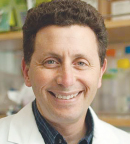
Randomized trials testing reductions in treatment intensity are challenging to conduct but are the best way to answer the critical question of who can be cured with less therapy.— Stephen P. Hunger, MD
Tweet this quote
Stephen P. Hunger, MD, Chief of the Division of Pediatric Oncology and Director of the Center for Childhood Cancer Research at The Children’s Hospital of Philadelphia, and the Jeffrey E. Perelman Distinguished Chair in the Department of Pediatrics at the University of Pennsylvania, Philadelphia, introduced Dr. Schrappe for his presentation of the AIEOP-BFM ALL 2000 trial results, emphasizing the strides that have been made in childhood acute lymphoblastic leukemia (ALL) over 40 decades. Today, this most common of childhood cancers has an event-free survival rate that exceeds 85%, and an overall survival of more than 90%.
“However, long-term adverse events are a significant concern, as survivors can have 70 to 80 years of additional life expectancy,” Dr. Hunger indicated. In patients considered at low risk for recurrence, which is identified in a number of clinical and molecular ways, overall survival is even more than 90%, begging the question of whether with contemporary therapies, “we are likely overtreating many, if not all, pediatric ALL patients,” he said. “Randomized trials testing reductions in treatment intensity are challenging to conduct but are the best way to answer the critical question of who can be cured with less therapy.”

I am hopeful that with further research we can be wiser about making this decision for different patients. It’s a sobering reality check that there are patients who need treatment to be as intense as what we are now giving, and we need to bear that in mind.— Ben Braun, MD, PhD
Tweet this quote
Ben Braun, MD, PhD, Associate Professor of Pediatrics at the University of California, San Francisco, agreed on the need to design less intensive treatments that will be safer but will maintain efficacy. While the current study has not provided such a roadmap, Dr. Braun said he is “not willing to abandon the idea that reducing the amount of chemotherapy would be better for some patients.”
He added, “This study was a very good attempt to reduce therapy for patients. It’s backed by a tremendous rationale. We think that if 95% of patients are being cured, it’s reasonable to assume there is a group of patients to whom we are giving too much therapy,” he said. “And one thing we know is that there is a cost to that, in terms of a variety of short-term and long-term side effects. We now have a greater appreciation of the burden that is borne by survivors of childhood leukemia. These late effects can really affect quality of life.”
Better Patient Selection
Dr. Braun advocates for better selecting the most favorable subgroups and evaluating reduced-intensity approaches in those patients. The current study was unable to identify these by minimal residual disease.
For example, the study did show that reduced-intensity treatment is much worse than standard therapy for patients aged 10 and older. “Age seems relevant,” Dr. Braun said. “This 15% of the population did particularly poorly with less therapy. More subgroup analysis would be interesting, to see if there are other hints,” he added.
“I am hopeful that with further research we can be wiser about making this decision for different patients,” he said. “It’s a sobering reality check that there are patients who need treatment to be as intense as what we are now giving, and we need to bear that in mind.” ■
Disclosure: Dr. Braun reported no potential conflicts of interest. Dr. Hunger has received honoraria from Jazz Pharmaceuticals, Spectrum Pharmaceuticals, and Erytech.


